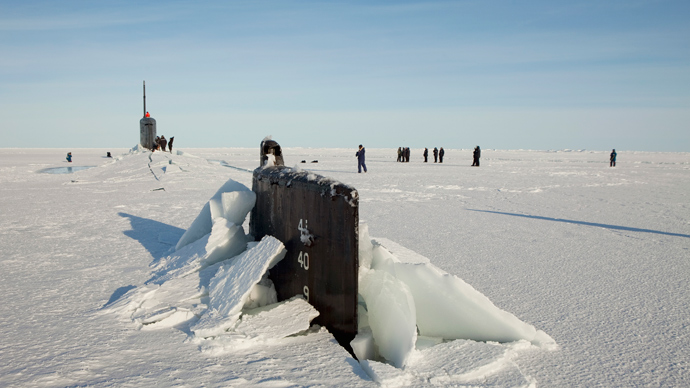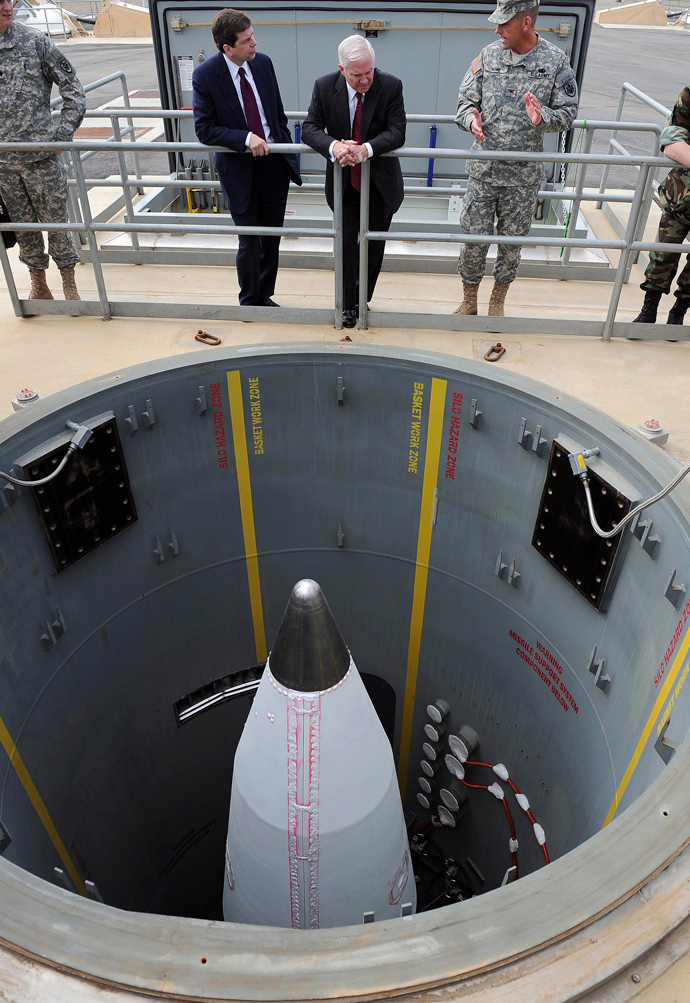‘US anti-missile reshuffle, really, aimed at control over Arctic resources’
The primary goal of the US plans to bolster missile defense in Alaska isn’t about tackling a North Korean threat, but putting a claim on the natural resources of the Arctic, former MI5 intelligence officer, Annie Machon, explained in an interview RT.
The Secretary of Defense, Chuck Hagel, said that development and
funding problems have forced the US to give up a key part of its
Eastern European missile defense plan.
The priority will now be given to efforts aimed at preventing a
possible North Korean nuclear attack, which would require adding 14
new interceptors to the 26 already placed in Alaska.
Former intelligence officer for MI5, Annie Machon, believes that
the North Korean threat is just as unrealistic for the US as the
one from Iran, with control over natural resources once again being
Washington’s true aim.
RT: The Pentagon will put 14 more missile interceptors in
Alaska, which is a roughly a 50 per cent increase on the current
number. It blames recent nuclear threats from North Korea. But is
it really likely that Pyongyang would launch a strike?
Annie Machon: It would be suicidal if you were to do that.
What we’re looking at – at this point – is North Korea being the
‘useful idiot’, a pretext for America to defend a resource-rich
part of the world. When I was in MI5, the one thing we were always
taught in terms of assessing the threat from any sort of source or
a country: one – do they have the capability; two – do they have
the intention. Now, of course, North Korea has very loudly said
that they have the intention to try and attack America, but
certainly doesn’t have the capability at this point.

RT:Iran has been the main focus of US concern for
years now, but has North Korea become enemy No.1 now?
AM: It has always been a puzzle as, of course, both
countries featured on George W. Bush’s ‘Axis of Evil’ list all
those years ago. But North Korea has always been much more
belligerent. I think Iran… and this is the assessment of the entire
US intelligence community, which came out in the National
Intelligence Estimate in 2007, which was – Iran stopped developing
any sort of nuclear weapon capability in 2003. And this has been
stood up time and time again since 2007.
So, we all know that Iran isn’t a real threat to America’s
interests. We all know it’s not a threat to the West. And this fake
shield they were trying to provide to Eastern Europe because they
would be in range of any missiles Iran would be able to launch was
just a fake ploy, I think. It was used as an excuse. So, it’s
interesting now that the focus is moving to an overtly aggressive,
but very small and incapable country away from Iran. I hope it’s
not a feint to make people stop watching Iran, stop watching the US
government’s lies trying to find as excuse to attack Iran.
RT:Washington's aborted plans to use Poland for its
missile defense due to spending cuts and development issues. How do
you see the future of the European missile defense
shield?
AM: It’s true that America is effectively bankrupt as a
country. And if they are beginning to cut military spending because
they’ve militarily overreached – they’re in serious problems
because that’s the one thing they’ve never cut before. And
certainly in terms of what they’re doing in Europe, we have a
situation where they are practically admitting that Iran isn’t a
threat to Eastern Europe. And that’s a problem. But the final point
really on this one is looking at where the money goes when they’re
trying to develop a ballistic missile defense system. It has yet to
be proven to work. Nobody knows if it works, nobody can make it
work yet. So, effectively, ever since Ronald Reagan announced ‘Star
Wars’ way back in the 1990s, what we’ve seen that this is threat is
used as a cash cow, which is milked by the defense industry.
Particularly, Boeing, I believe, and Raytheon, who made billions
out of making these fake defense shields.
RT:How do you think the Chinese new government will
react to the US increasing its arms around the Pacific?
AM: Well, that’s going to be a very interesting question.
It’s almost like North Korea is a patsy, used to put up this new
missile defense in Alaska. And the key part is that there’s been
this covert war to control the diminishing resources of the world,
which is waged across continents – between, certainly, the US and
China over the last decade. And what we’re looking at now is, I
think, a very careful geopolitical strategy to control and put
bases in Alaska because anyone, who has Alaska can control the
Arctic area. And, as the arctic area melts more quickly, more
countries are going to fight for the resource-rich area as the ice
recedes. America, by having these defenses in Alaska, will be very
well-placed to protect its economic interest in that area.

The statements, views and opinions expressed in this column are solely those of the author and do not necessarily represent those of RT.












